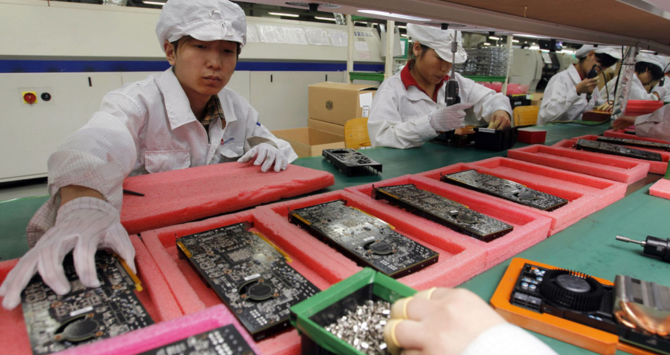Foxconn, formally known as Hon Hai Precision Industry Co., Ltd., is a multinational electronics contract manufacturer headquartered in Taiwan. As one of the world’s largest suppliers of electronics, Foxconn has attracted significant attention due to its sheer size, its connections to major brands like Apple, and controversies related to its labor practices. The latter concern became particularly pronounced in the late 2000s and early 2010s due to a series of worker suicides. We explore the Foxconn suicide scandal, shedding light on the nuances of global manufacturing and the implications for worker rights and corporate responsibility.

Chronology of the Suicides
The global spotlight on Foxconn intensified in 2010, when a series of suicides occurred at its factory in Shenzhen, China. Between January and November of that year, 14 young workers died by suicide, with several more attempting. This alarmingly high rate sparked investigations by media, rights groups, and companies associated with Foxconn.
Several factors were cited as contributing to the despair felt by many Foxconn employees:
- Rigorous Work Conditions: Many reports highlighted the demanding and monotonous nature of the work. Employees often worked excessive overtime, sometimes surpassing the Chinese legal limit of 36 hours per month.
- Isolation: The vast majority of Foxconn’s workforce consisted of migrant laborers who had traveled far from their hometowns, leaving behind families and familiar environments.
- Company Culture and Discipline: Foxconn maintained a military-style discipline, where minor mistakes by workers could lead to public humiliation.
- Living Conditions: While the company provided dormitories, these were often overcrowded, with multiple workers sharing a small room.
In response to a query by a reporter about the suicides, Steve Jobs, then CEO of Apple, commented at the D8 conference in 2010: “We are on top of this. Foxconn is not a sweatshop. It’s a factory – but my gosh, they have restaurants and movie theaters… but it’s a factory.” His comments drew criticism from some quarters, suggesting an oversimplification of the issues.
Actions and Responses
Following the widespread media attention and outcry:
- Foxconn’s Measures: Foxconn took several steps, including raising worker wages, improving living conditions in its dormitories, and installing safety nets around its buildings. They also increased the presence of counselors and mental health professionals.
- Corporate Responses: Apple, Dell, and other major clients of Foxconn announced investigations into the working conditions at Foxconn factories. Apple went further, joining the Fair Labor Association in 2012, which started conducting audits of Foxconn’s factories.
- Media and Public Scrutiny: The Foxconn suicides brought forth a wave of investigative journalism. One of the most notable was a monologue by Mike Daisey which aired on the radio program “This American Life.” However, parts of Daisey’s account were later found to be fabricated, leading to a retraction by the program. Despite the controversy, it intensified the conversation about labor practices in global supply chains.
The Foxconn suicide scandal serves as a sobering reminder of the complexities and ethical challenges in global manufacturing. While Foxconn and its corporate partners have taken steps to improve conditions, debates persist about the responsibilities of multinational corporations toward workers in their supply chains.
The incident also spurred discussions on the rapid pace of China’s industrialization and the strain it placed on its younger generation of workers. As sociologist Pun Ngai noted, “The suicides were a public act of protest against a global production system that is exploitative and suppressive.”
The Foxconn suicides are a microcosm of the broader challenges faced by the global electronics manufacturing sector. They highlight the often unseen human costs embedded within our electronic devices and underscore the pressing need for transparent, ethical, and sustainable production practices.
References
- Chan, J., & Pun, N. (2010). Suicide as Protest for the New Generation of Chinese Migrant Workers: Foxconn, Global Capital, and the State. The Asia-Pacific Journal.
- “D8 Conference.” (2010). All Things Digital.
- “Retraction.” (2012). This American Life, Episode 460.






3 thoughts on “The Foxconn Suicide Scandal: A Deep Dive into Modern Manufacturing and Worker Welfare”
YyjpRrNamils
EhGLTAmdSJq
I luckily stumbled upon this wonderful website a few days back, they offer helpful content for members. The site owner is doing a terrific job serving the community. I’m thrilled and hope they persist in their excellent service.